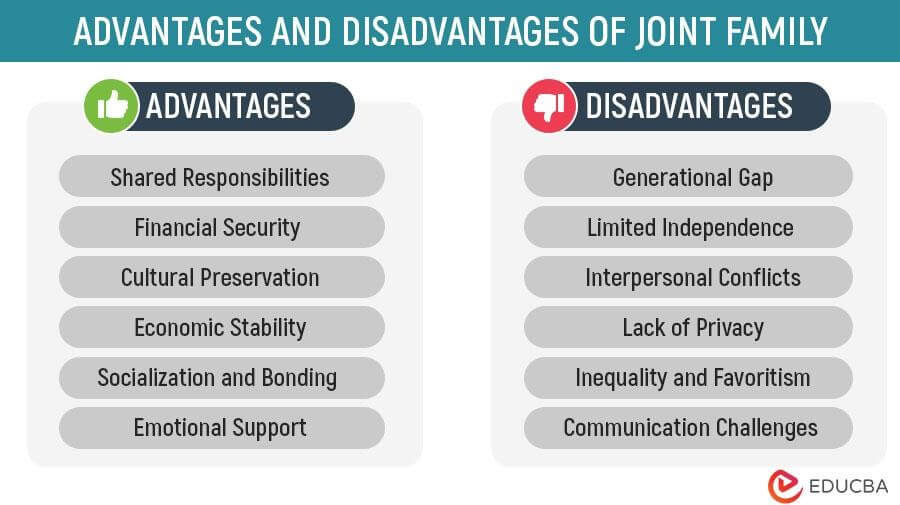Updated November 6, 2023
Advantages and Disadvantages of Joint Family – Introduction
Imagine living in a big, happy home where many generations live together. There is always laughter, yummy smells from the kitchen, and lots of family members around. Everyone helps and cares for each other. Kids grow up with love from not just parents but grandparents, aunts, uncles, and cousins. It’s a cozy, supportive place, teaching us that family brings joy and strength, making every moment together precious. That is what a joint family is all about.
The concept of a joint family, where several generations live under one roof, has been a prevalent practice in many cultures around the world. Joint families offer a sense of togetherness, support, and a shared responsibility for the household. However, they also come with their own set of pros and cons. Let us look at some of the advantages and disadvantages of a joint family.
Advantages of Joint Family
Let’s look at some of the advantages of living in a joint family:
1. Emotional Support and Companionship
Joint families provide a built-in support system, offering emotional support and companionship to all family members.
2. Shared Responsibilities
In a joint family, responsibilities are distributed among family members, making it easier to manage household chores, childcare, and financial obligations.
3. Financial Security
Joint families often enjoy better financial security due to the pooling of resources and shared expenses.
4. Cultural Preservation
Joint families are excellent for preserving cultural traditions and values through intergenerational interactions.
5. Socialization and Bonding
Living in a joint family fosters close relationships and strong bonds among family members.
6. Child Care and Education
Joint families often provide a built-in system for childcare and education, with grandparents and other family members contributing to a child’s upbringing.
7. Economic Stability and Resource Sharing
Pooling resources can result in economic stability and the ability to make significant investments or face unexpected expenses.
8. Social Network
Living in a joint family provides a broader social network, which can benefit career opportunities, social connections, and support during emergencies.
Disadvantages of Joint Family
Let’s look at some of the disadvantages of living in a joint family:
1. Dependency
Joint families can sometimes foster a sense of dependency on other family members for emotional and financial support.
2. Generational Gap
Differences in values and attitudes between generations can lead to misunderstandings and generational conflicts.
3. Limited Independence
In a joint family, individuals may have limited control over decision-making, as it often requires consensus among family members.
4. Interpersonal Conflicts
Proximity to extended family members can sometimes result in conflicts and differences of opinion.
5. Lack of Privacy
Joint families often lack personal space and privacy, leading to tension and discomfort.
6. Inequality and Favoritism
Sometimes, certain family members may experience favoritism or unequal treatment, leading to resentment and division.
7. Limited Freedom and Personal Growth
Joint families may limit individual freedom and opportunities for personal growth, especially for younger members.
8. Inflexibility
Joint families can be less adaptable to changing circumstances, which can be problematic when family members need to move or adapt to new situations.
9. Communication Challenges
Effective communication can be difficult in large joint families, leading to misunderstandings and miscommunication.
Recommended Articles
We hope you found this article on the advantages and disadvantages of joint family helpful. Refer to the following recommendations to view similar articles,




